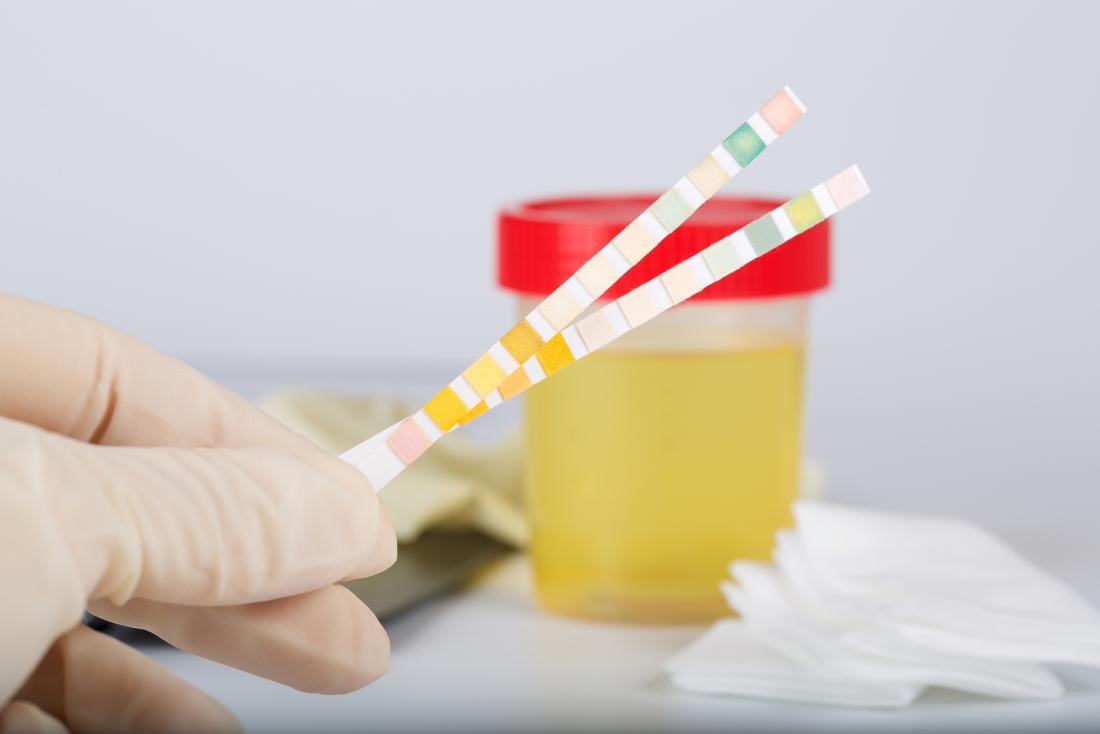
Why is pee yellow? The color of urine and the role of urobilin
Urobilin and yellow pee: urine is composed mostly of water (95%), urea and mineral salts, as well as substances in lower concentrations
It is Urobilin that gives urine its yellow color
This molecule is derived from the breakdown of hemoglobin, a protein highly concentrated in red blood cells and responsible for oxygen transport in the blood.
Erythrocytes, at the end of their life cycle of about 120 days, are degraded.
Hemoglobin is broken down into a protein part (globins), from which amino acids are recovered, and a non-protein part, the heme group, from which Bilirubin is obtained.
How to get to urobilin
From it, through several intermediate steps, stercobilin is obtained, excreted via the feces, and urobilin, which is instead partly excreted with urine and partly reused by the liver in the production of bile.
The shade of yellow, more or less intense, of urine depends mainly on how hydrated we are: the more water we drink, the more the pigment will be diluted, giving a more “transparent” appearance to urine.
Blue urine: truth or legend?
The color of urine is a very valuable data to monitor our health status.
The “straw yellow” color of urine is an indicator of good health while too much yellow indicates that we should drink more.
Far more alarming is the case of red urine, which may indicate the presence of blood due to inflammation or infection of the urinary tract[1].
Should you show this symptom, don’t wait to tell your primary care physician about it!
It is hard to believe, but in rare cases the urine may have a tending to blue coloration.
This unusual color can be attributed to the use of a drug used to treat cases of Methemoglobinemia.
Called “Methylene Blue,” it is, indeed, dark blue in color.
For several years, this drug also had an application as an antimalarial[2].
There are many substances that alter urine coloration.
Asparagus, for example, can impart a green hue (as well as an unpleasant odor); excess beets, blackberries, or rhubarb can result in a reddish tint to urine; pumpkin and carrots give an orange tone.
The same applies to food dyes, which excreted with urine alter its color.
References
Alterations in urine – Cleveland Clinic
Medical uses of Methylene Blue – National Center for Biotechnology Information
Read Also
Emergency Live Even More…Live: Download The New Free App Of Your Newspaper For IOS And Android
Colour Changes In The Urine: When To Consult A Doctor
Paediatric Urinary Calculus: What It Is, How To Treat It
High Leukocytes In The Urine: When To Worry?
The Colour Of Pee: What Does Urine Tell Us About Our Health?
Pee Colour: Causes, Diagnosis And When To Worry If Your Urine Is Dark
Haemoglobinuria: What Is The Significance Of The Presence Of Haemoglobin In Urine?
What Is Albumin And Why Is The Test Performed To Quantify Blood Albumin Values?
What Is Cholesterol And Why Is It Tested To Quantify The Level Of (Total) Cholesterol In The Blood?
Gestational Diabetes, What It Is And How To Deal With It
What Is Amylase And Why Is The Test Performed To Measure The Amount Of Amylase In The Blood?
Adverse Drug Reactions: What They Are And How To Manage Adverse Effects
Albumin Replacement In Patients With Severe Sepsis Or Septic Shock
Provocation Tests In Medicine: What Are They, What Are They For, How Do They Take Place?
What Are Cold Agglutinins And Why Is The Test Performed To Quantify Their Values In The Blood?


